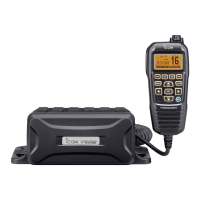Why is there little or no sound coming from the Icom Transceiver speaker?
- JJoseph GregoryJul 26, 2025
If you're experiencing little to no sound from your Icom Transceiver's speaker, there are a few potential causes. First, the squelch level might be set too high; try adjusting it to the threshold point. Second, the volume level could be too low; increase it to a suitable level. Finally, if the speaker has been exposed to water, use the AquaQuake function to remove it.


